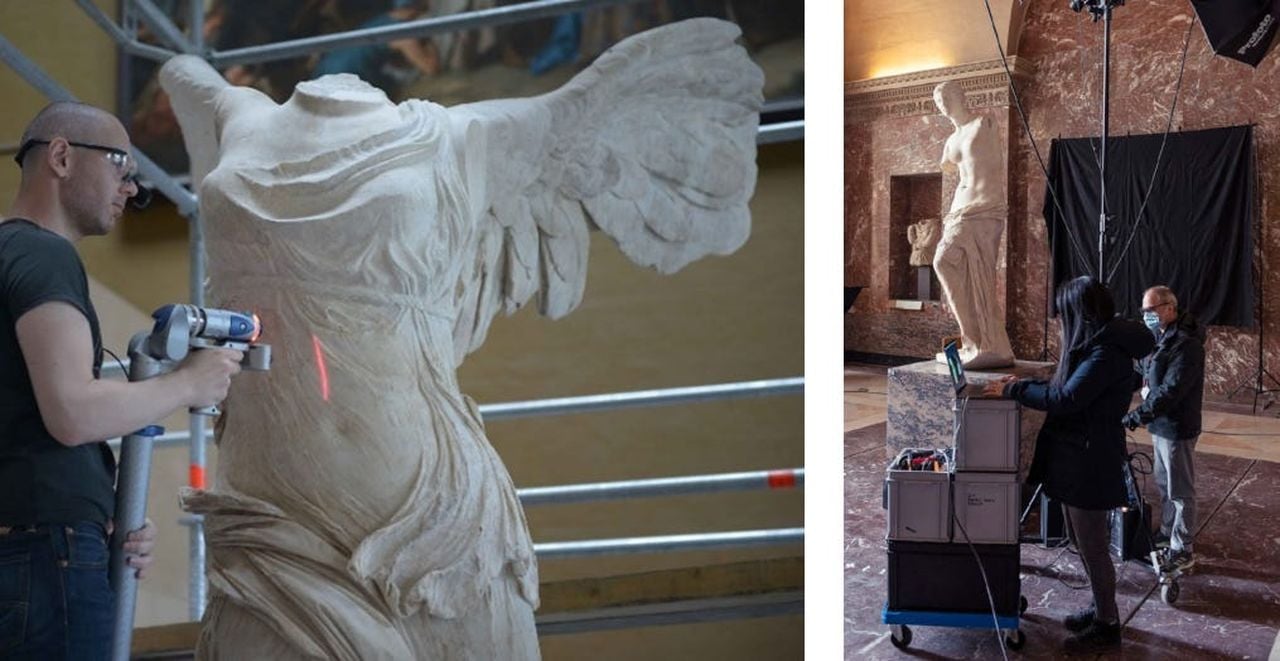
Cosmo Wenman has provided a massive update to his legal struggle to force the release of 3D scans from a French museum.
Wenman is a San Diego-based 3D artist that has long been performing 3D scans of museum pieces, with our first encounter with him back in 2013. He’s the person responsible for the astoundingly detailed 3D scans of the Venus de Milo and similar 3D models you’ll find on popular 3D model repositories.
As one of the first people to attempt museum scans, he encountered issues with museum management that didn’t understand scanning. However, after some explanation, many of the museums have come around to the concept.
What is that concept? It’s pretty simple: these museums hold original sculptures by famous artists. The artists are long deceased, and the works are most definitely now in the public domain. Being in the public domain, they should be usable by anyone, although originals are housed by museums.
Wenman’s point is that by releasing detailed 3D scans of famous works, a museum could benefit by having far greater digital exposure to the works worldwide. This increased interest would inevitably result in more visits to see the actual originals in the museums.
Many museums have undertaken internal 3D scanning projects, usually as a kind of digital insurance against disaster. Some years ago, a museum in Brazil burned to the ground, with the loss of countless historical artifacts. Unfortunately, in that case, few if any were 3D scanned, so there’s really no proper record of them for future use.

Forward-thinking museums then provide access to these 3D scans to the public for the benefits above.
However, some museums are still stuck in an old mindset where they seem to believe that they “own” the artwork and that it should not be replicated in any way. Even though they have taken 3D scans, they don’t want to release them.
Wenman has taken issue with one of these stubborn museums, the Musée Rodin in Paris, which holds works from the estate of notable sculptor Auguste Rodin. Some you may even ba familiar with: The Thinker. In 2022 we wrote of his attempts to release scans from this French museum.
Wenman approached the Museum in 2017 with requests for the 3D scans, but in his words, it “did not go well.” After some exchanges, Wenman launched a lawsuit in 2019 in France to force the publicly funded Museum to release the scans. The idea was to use France’s freedom of information laws to release the files as they were considered “administrative documents”. Last year, he won the case:
“After more than three years of litigation and Musée Rodin’s desperate efforts to evade the law, in April 2023 the Administrative Tribunal of Paris issued a historic, precedent-setting decision, ordering the prestigious museum to make several of its 3D scans of some of the world’s most famous sculptures accessible to the public including The Thinker, The Kiss, and The Gates of Hell. The Administrative Tribunal’s April 21, 2023 decision is available here.”
But there’s a catch: Musée Rodin is not complying with the decision and refuses to cooperate and release the files.
According to Denman’s sources, the museum fears loss of gift shop revenue if anyone can 3D print their own replicas of the sculptures. Wenman describes incredible steps the Museum has taken to defend its argument, all while refusing to distribute the scans as ordered by the court.
Wenman’s lengthy post details the legal and moral arguments used by the Museum, and how they were considered invalid. Regardless, the Museum still has not released the scans, aside from a token set of two 3D models. These were likely released in an attempt to portray their compliance, but in truth the vast majority of the scans remain secret. However, the Museum resorted to altering the scans to include “reproduction” tags in the 3D models, and not releasing the true, original 3D scans as ordered.

Wenman walks through all of the arguments and purposes that they are so unreasonable that if agreed to by French courts, they might affect freedom of information rules in wider domains. He explains:
“All this public damage because Musée Rodin wants to operate like a private atelier with a monopoly to exclusively service one long-dead artist’s estate and his wealthy collectors, forever. Rather than embrace the future and permit the public to access their 3D digitizations of the public’s cultural heritage, Musée Rodin and the Ministry of Culture have created a smokescreen of legal and technological nonsense and started a fire that threatens our common resources across the entire digital landscape.”
As of this moment, Musée Rodin has provided Wenman with no documents, nor even token compensation ordered by the courts. Nevertheless, he believes this is an important step towards full and proper release of historic 3D scans by all museums, everywhere:
“We have established the strongest legal foundation for public access and reuse of digitizations of public domain works ever, in the most challenging possible circumstances, against an extremely well-positioned adversary. This ruling is a significant accomplishment that will help with every other fight for public access to cultural heritage works in France and beyond.
It’s a victory for open access.”
This is a fascinating account that provides anyone with a boatload of logic to take to your local museum if you’re interested in obtaining 3D scans of their collections.
Via Cosmo Wenman
